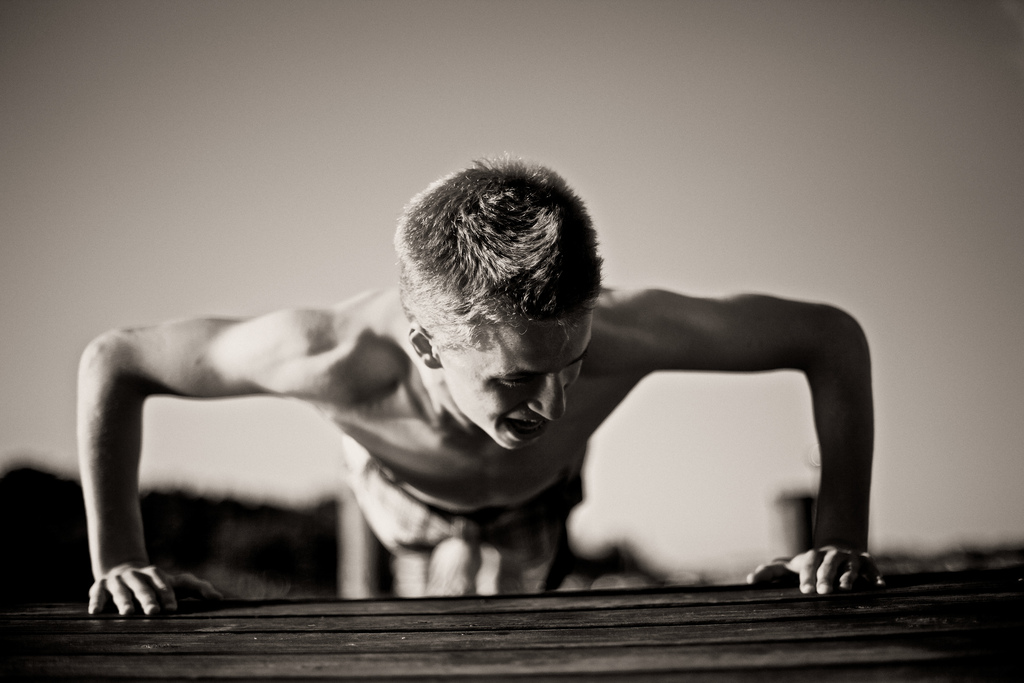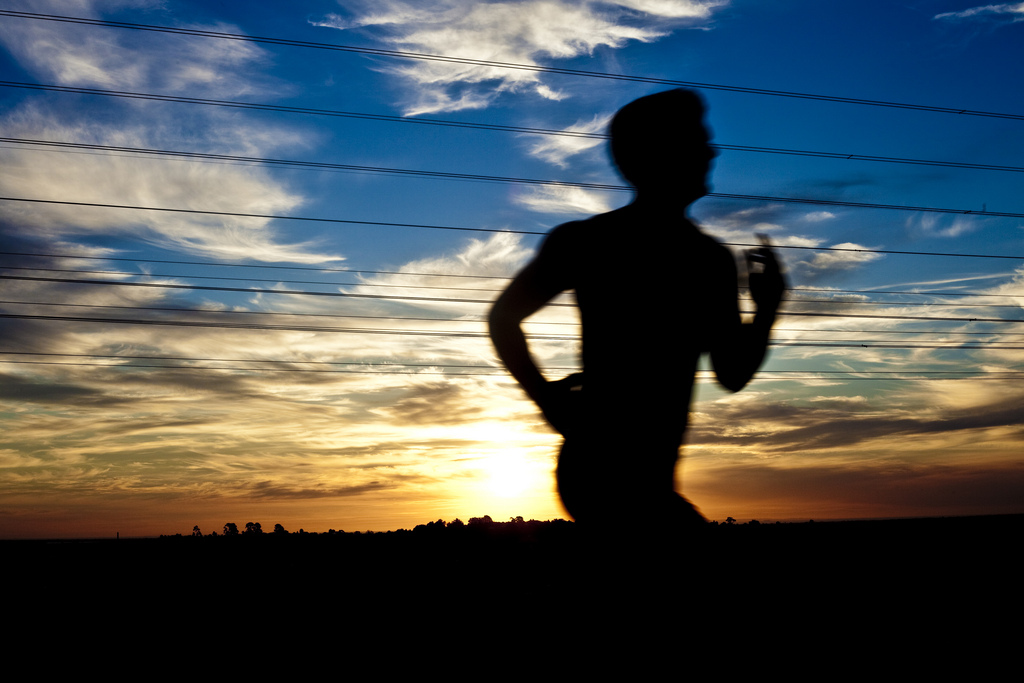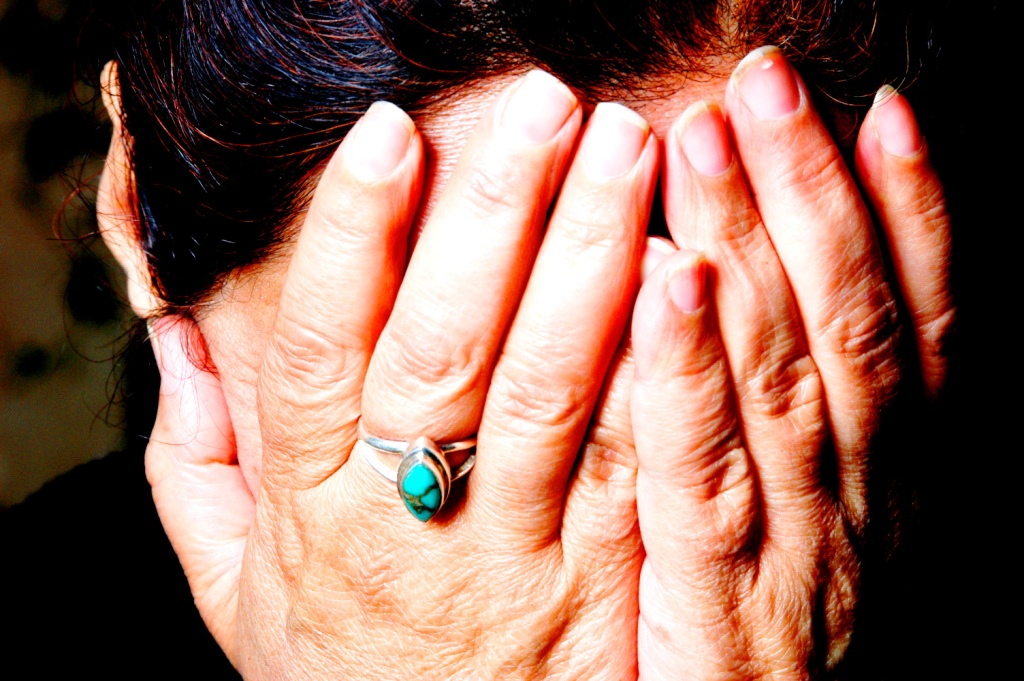Some people want to lose weight. Some people want to gain weight. I used to be the worst of both worlds- really skinny, but not lean. Instead I had some extra padding, and a sizable beer gut.
I wanted to get into shape, to lose the gut, gain some muscle, and look more like all the other fit guys I always saw hanging out at the beach. So I’d hit the gym every so often to try and put on muscle. Except…I didn’t hit the gym consistently, and I didn’t push myself very hard when I was there. I changed my workouts every month, as if that would solve my problem…it didn’t.
So I started dieting- cutting out the sweets and sodas, eating more meats, nuts and vegetables. Except I made exceptions for whenever I was eating out, which was often. Or whenever I felt too tired to cook, which was often. Ultimately, I ended up following my diet for only about half of my meals. And again, my “diet” changed every few months.
So after a couple years of yo-yo dieting and half-assed gym sessions, I hadn’t made any noticeable progress; I was just the same skinny, under-confident guy with the same beer gut and utter lack of discipline. I knew I needed to change, but my whole way of going about it just wasn’t working.
What I realized was that willpower alone wasn’t enough, and in fact was a pretty small part of the equation. Motivation mattered, but I couldn’t depend on it- I needed ways to motivate myself, but also to ensure that I made the right choices even when I didn’t feel motivated. What I developed were systems based on accountability, awareness, social pressure, and yes, even making fitness fun.
Here’s what I did.
I took “before” photos…and worked towards my “after” photos
The very first thing I did was take a few selfies. I although I was wearing shorts and no shirt, they weren’t sexy; I let my gut hang out and didn’t flex or make any effort to look good. I picked out the three best photos- one front, one back, and one side shot- and printed them out. I then taped these photos to my bathroom mirror, where I would see them several times a day.
I also posted the photos to Facebook and actually made the least flattering photos (the side profile) my main Facebook picture for a few months. This was accompanied by an announcement of my goals for the next six months. This step wasn’t strictly necessary, but it did add an extra element of pressure to live up to a commitment I had made in public.
To be clear, I wasn’t getting down on myself. Rather, the photos were a reminder that I hadn’t been living up to my own standards, and needed to change. Once I started making progress, the photos taped to my mirror actually made me feel great because they were a reminder of how far I had come. And once I reached my goals, they became my “before” photos.
I kept a photo journal of all my meals
The next thing I tackled was my diet. I had a great diet already- lots of meat and veggies, some nuts, and relatively few carbs. I just needed a way to ensure I would actually stick to it.
I started taking photos of every single meal with my phone. This forced me to me stop and consider all of my food choices, and made me a lot more aware of how well I was or was not sticking to my diet. Once again, I added an element of social accountability by posting all of my meal photos to a Facebook folder so that my friends could see them.
So what result did this have? My dietary compliance rate went from 50% to 80%- meaning that I followed my diet for eight out of ten meals. While that isn’t perfect, I started to see progress, and looking at my journal made me feel great about eating healthy. Next up, I needed to start exercising consistently.
I tracked all of my workouts
Since recording everything had worked for my diet, I decided to try the same strategy for exercise. Every time I went to the gym, I recorded my workouts in a little notebook that I kept in my gym bag. Additionally, I timed each workout. Although I posted occasional updates to Facebook, this didn’t provide the same level of public accountability that I got from my photo journaling.
Nonetheless, simply recording my workouts caused me to work out on schedule 70% of the time, and no more than a day late 80% of the time. I also felt more motivated, as the journal allowed me to review my progress and see just how far I had come. As an added bonus, it also became much easier to know what weight to use for each exercise.
I’ve since stopped using a paper notebook, however, as I find fitness tracking apps are easier to use and make it easier to track my workouts. Right now I’m using JEFIT, and the moment I started using it, my average workout went from an hour to 25 minutes, for the same workouts. The reason is that JEFIT times your rest periods, and it turns out I was taking waaaaay too long between sets.
There are literally thousands of fitness apps to choose from, but aside from JEFIT there are two others I’d recommend. Bodyspace is another free app that works great for weightlifting, and has stronger social features than JEFIT. For runners, there’s Zombies, Run! It’s not free like the other two, but this is one of the cleverest apps I’ve ever seen- it uses your phone’s accelerometer to turn running into a live-action zombie survival game.
I turned healthy habits into a game
Now I was starting to eat well and hit the gym 80% of the time, but I wanted that figure to be well over 90%. I created a point system to turn healthy habits into a game- I would earn points every time I did something I was supposed to do, and lose points when I did something bad. I tracked daily and weekly totals using my computer’s notepad program, and soon developed a drive to beat my own high score. The result: my diet and exercise compliance rates went from 80% to 90%, and my body fat percentage went down a couple more points. Success!
I’ve since found an even better way to do this- instead of using a homemade point system and manually tracking everything, I now use Habit RPG, a free app that turns productivity and healthy habits into a fun and addictive game that can be played alone or with friends. I now skip workouts or cheat on my diet only once or twice a week. Habit RPG is helping me build other good habits as well- I now practice my singing every day, and get at least 50% more work done than I did just a few months ago.
But back to a few years ago: I was doing almost everything right, but there was one thing I still kept avoiding. I couldn’t bring myself to consistently perform the one exercise I dreaded most: squats.
When all else fails, it’s time to put money on it
I hated squats. I hated them so much, gamification, public accountability, and the desire to get into amazing shape combined weren’t enough to make me do them. But I had to do them, so I decided to create consequences for failure.
I told a close friend that I planned to do at least three sets of barbell squats, once a week. I asked him to check in with me every week, and any time I hadn’t done my squats for the week, I owed him ten dollars- which I later raised to twenty. While I did end up having to pay my friend a little bit of money, this did ultimately get me squatting, and I was finally able to build lower body strength and gain some serious muscle.
I’ve since begin using an app called Stickk for this same purpose. It allows you to make commitments and set forfeits- either financial or reputation-based- for failing to meet those commitments. You can commit to publicly shaming yourself when you skip a workout, for instance, or forfeiting some money to a friend. You can donate that money to a charity you like, or for extra motivation, to one that you hate! I now use Stickk whenever there’s something I need to do, but hate doing badly enough that nothing else will get me to do it.
These five psychological tactics helped me to lose ten pounds of fat and gain almost twenty pounds of muscle in the space of seven months, and I’ve watched firsthand as friends, family and clients of mine have achieved similar results. The most important lesson I learned was that you can’t rely on willpower, or on always wanting to make the healthy choice. Instead, what you need are systems- systems for measuring your progress, systems for keeping yourself disciplined and accountable, and yes, even systems for making fitness fun.
Photo by Roger Augdal Olsen






That’s a great tip to make a photo journal of all the food I ate. Seems like it would be a great way to keep yourself accountable while also being able to look back on all the food you’ve eaten!
What wonderful ideas! Thanks for sharing, John. I am going to test those apps out myself so that I can share them when needed. Finding systems to support people in changing habits sounds like a great way to go. Willpower is definitely a limited resource – it fades throughout the day, throughout the week and when we are stressed.
Tracking workouts is a great tip. In all my exercise sessions, I make sure I track everything. It’s easy to be motivated to workout more when you are tracking your fitness activities and progress.
Great tips for long term change. I think tracking is a good form of accountability, especially as the very act of recording behaviour changes that behaviour, usually for the better. Thanks for sharing your journey.
“I told a close friend that I planned to do at least three sets of barbell squats, once a week. ”
Exactly what I do. Although I’m hurting for days because I do it as a part of a complete routine (I skip during recovery).
Excellent post